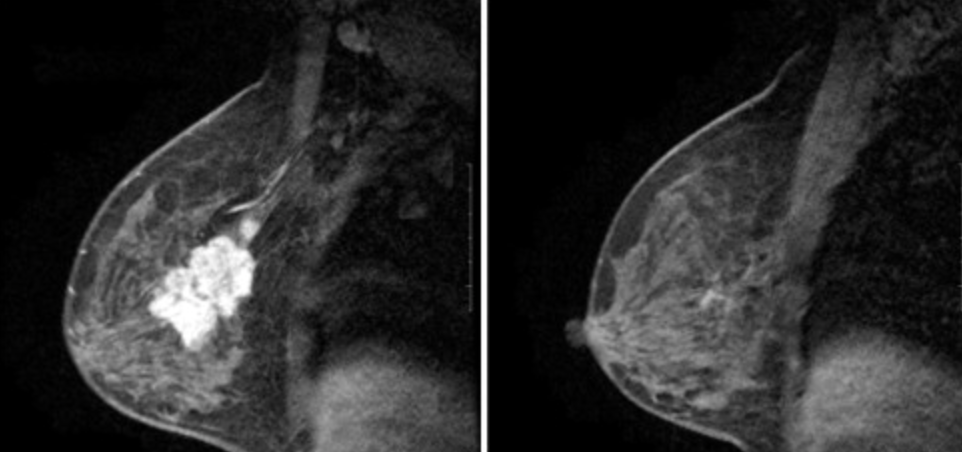Complete MRI Response and Neoadjuvant Chemotherapy in Patients with Triple Negative Breast Cancer
Sarah A. Dodge, M.D.
Triple negative breast cancer (TNBC) is a type of breast cancer that does not have the proteins for the estrogen receptor (ER) and progesterone receptor (PR). It also does not over-express the human epidermal growth factor 2 (HER2) proteins. Cancers that have the proteins for ER and PR are called hormone-receptor positive breast cancers. Patients with TNBC frequently receive Neo-adjuvant chemotherapy (NAC). This means chemotherapy is given before surgery. It is often used in patients with TNBC to shrink the tumor prior to surgery. If this strategy is successful, it may turn inoperable tumors into operable tumors. It may also increase the possibility of preserving the breast instead of having a mastectomy. A patient’s response to NAC can also help tailor treatment to the biology of the specific cancer.
Evaluating the Response to NAC
Breast MRI is an important way of evaluating the breast. An intravenous dye is injected in a vein in order to perform the MRI. Then the dye concentrates within the breast cancer and makes it visible. Breast MRI, which shows the enhancement (blood flow) of a breast cancer, has proven to be the most accurate way to evaluate how well NAC is working. Breast MRI performs better than physical exam, mammography, and ultrasound in assessing a tumor’s response to NAC. Often, a patient will receive a breast MRI before beginning NAC and then again towards the conclusion of NAC. Then doctors can evaluate if the cancer has responded to the treatment.

When no residual enhancement is found at the site of the cancer the tumor is considered to have responded to NAC. This is called a complete MRI response. This differs from a pathologic complete response, which is defined as the absence of any residual tumor cells in the tissue that has been removed surgically.
Complete MRI Response
Sometimes there may be a complete MRI response but not a complete pathologic response. In other words, even though an MRI doesn’t show residual enhancement, there are still residual tumor cells found in the final surgical specimen. This is why surgery is still necessary for the treatment of breast cancer.
A 2019 study from the University of California San Francisco showed that approximately 50% of patients who have a complete MRI response do not in fact have a complete pathologic response. The finding of 50%, however, was derived by looking at a group of patients who have TNBC as well as ER/PR positive cancers. When the group of patients was narrowed to include only those with TNBC, breast MRI correctly predicted a pathologic complete response in approximately 90% of patients. In other words, a complete MRI response is more “believable” in patients with TNBC than in those with ER/PR positive cancer. The technical way to say this is that breast MRI has a higher negative predictive value in patients with TNBC.
Obtaining a breast MRI before and after neo-adjuvant chemotherapy is very important in patients with Triple Negative Breast Cancer. While more research is needed, perhaps in the future, patients with TNBC who have had a complete MRI response may be able avoid surgery altogether. You can read more about an exciting clinical trial that is looking at this question in one of our previous Expert Forum posts